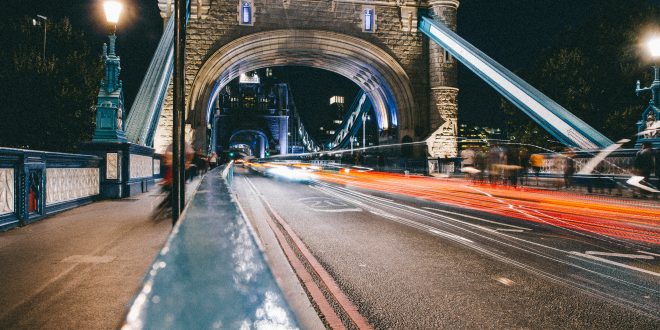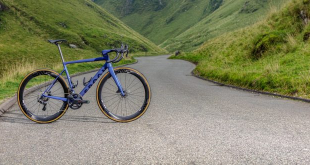Daniel Blackham sits down with Peter Mildon, COO and co-founder of VivaCity to discuss the business’s journey to-date and the importance of local voices on local challenges.
Sustainable travel continues to gain momentum across the UK. With a vast range of ways to travel on the cards, it’s now time to harness the right data in order to support decisions on new schemes and promote positive change by measuring what matters. Step forward VivaCity.
Founded nearly a decade ago, VivaCity’s AI solution provides detailed and anonymous data insights to help optimise transport networks, improve urban infrastructure efficiency and save lives.
“It’s been a whirlwind journey,” says Peter Mildon, chief operations officer and co-founder of VivaCity, when discussing the company’s history to-date. “I’ve absolutely loved parts of it. I found other bits of it quite stressful.”
VivaCity sits across two unique areas by being both a venture-backed start-up that works closely with government and local authority.
“There’s two different worlds there, and trying to get those worlds to combine is always a challenge,” adds Mildon. The Silicon Valley mantra of ‘move fast and break things’ doesn’t cut it in the taxpayer funded public sector.”
Despite the challenges of merging the two, VivaCity has seen significant uptake in its services in recent years with the pandemic seeing a change in attitude from local authority when it came to implementing new schemes.
Recent announcements have seen Glasgow City Council harness AI to improve traffic flow and road safety, as well as Transport for West Midlands looking to new smart sensor technology to increase safety on cycle routes in Solihull.
“The pivotal thing for us that fundamentally enabled the business to leapfrog and become a big enough player to actually impact change and impact the things that we care about in terms of making transport more sustainable and safer, was Covid,” comments Mildon.
“Clearly I would never want to turn around and say that that horrific experience at a human and personal level was a positive thing, but going back to what I was saying a few minutes ago about ‘move fast and break things’, the attitude in government at that time was, move fast.
“You’ve got an opportunity here to try and test new things, and we’ve got a ‘national emergency’, so things moved quicker.
“That helped us become an established and more stable business that has then been able to carry on adding value after the pandemic is a long, not quite yet forgotten, thing in history.”
New opportunities
At the time of writing, the new Labour government has just passed its first 100 days in office after more than a decade in the opposition benches. While it would be unfair to judge success or failure at this stage, Mildon is optimistic about some of the pledges and commitments being made.
“In terms of the manifesto and some of the commitments, I think the objectives are good,” he says.
“The green agenda, trying to decarbonise transportation while providing equitable transport, with a focus on public transport around that as well, and making sure everyone can get access to it – all of those things are politically good.”
Ultimately for Mildon, the goal is about getting people moving efficiently and safely.
“I’ve always said that if you can persuade 10% of people to walk, cycle or get public transport, that’s 10% less cars in the traffic jam in front of you,” he adds.
“So even if you really want to drive, any plan that creates that modal shift is good for you, as well as for the people who are moving.
“We’ll hopefully find out more over the next few months [from the government about its plans], but we are certainly seeing some really positive movement in terms of continued commitment to investment around active travel, but alongside that, more devolution towards the local local authorities making decisions about how that is best enacted in a local place.”
As Mildon explains, the role of local authorities in making decisions for local roads is crucial to get the right infrastructure in the right places.
For example, one city may have the objective of having segregated cycle lanes to make people feel safer.
“So they want to get more timid cyclists into that and see more timid cyclists in that world, rather than as a route to get people to move more efficiently from A to B,” says Mildon.
“A different city might have the objective that the cycling infrastructure is to make it more efficient for someone to cycle from A to B, and if that creates a modal shift, more efficient for people to drive from A to B as well.
“And those are subtly different.
“You’ll see a difference in how you design those networks, in terms of the right of way at crossroads, potentially trying to either slow cyclists down or let them cycle through it at 20/30, miles per hour.
“It’s up to local politicians to make those sorts of decisions. I don’t think it’s right for that to happen nationally.”
In short, a good looking cycle lane in one city will be different to another, and having data that lets you work out if the design meets that level of objective is where VivaCity comes into play.
“We’d never say this particular histogram of cycling in a cycle lane is good or bad,” comments Mildon. “It’s just this is the histogram that you’re getting.
“What was your objective? Was your objective to get everybody, whether they were the most timid cyclist or the most energetic cyclists all in the same lane? Or was your objective to have the energetic one still out in the road while the more timid ones were in the lane?
“That’s what local politics decides, the designers try and deliver it, and we measure whether it’s working or not.”

 BikeBiz Bicycle and cycling retail news
BikeBiz Bicycle and cycling retail news




